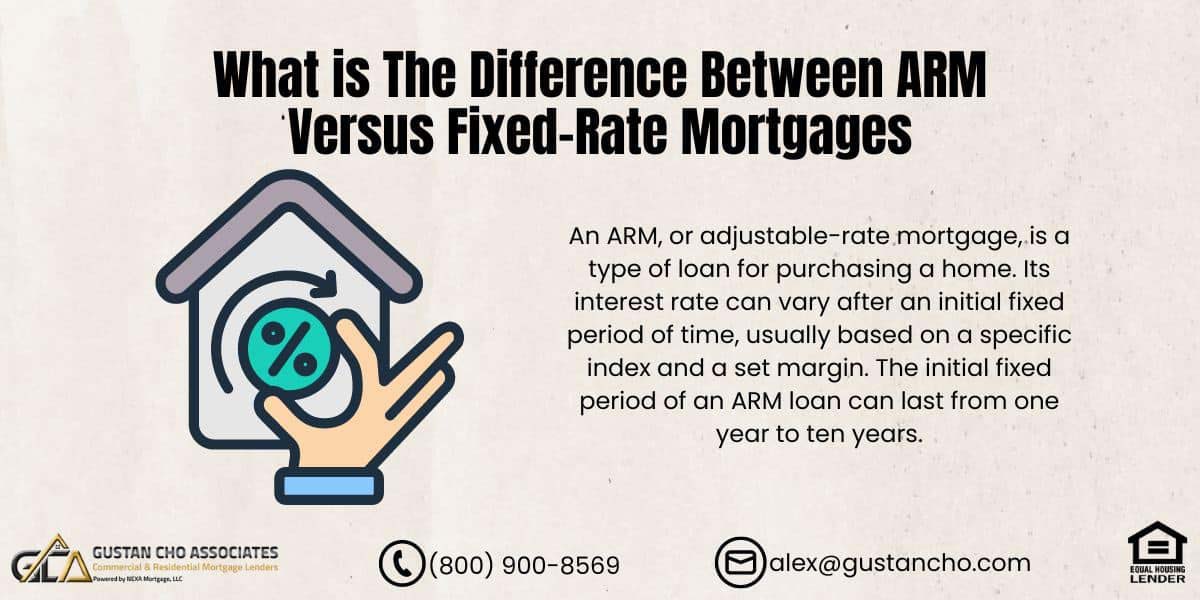-
What is the Difference Between and ARM and Fixed Rate Mortgage Loans
Posted by Lilly on April 17, 2024 at 4:14 pmThe confusing thing for many consumers is distinguishing the difference between fixed-rate and adjustable-rate mortgages when buying a house or refinancing a mortgage loan.
Lilly replied 1 year, 1 month ago 1 Member · 1 Reply -
1 Reply
-
Adjustable-rate mortgages may benefit first-time homebuyers or homebuyers who do not intend in the home they are purchasing for longer than three to seven years. The main differences between adjustable-rate mortgages (ARMs) and fixed-rate mortgages are:
- Interest Rate:
- Fixed-rate mortgages have an interest rate that remains the same for the entire loan term, typically 15 or 30 years.
- Adjustable-rate mortgages have an interest rate that can change periodically, usually based on a benchmark index plus a predetermined margin.
- Predictability:
- Fixed-rate mortgages provide more predictability, as the monthly payments remain the same throughout the loan term.
- Adjustable-rate mortgages have less predictable monthly payments, as the interest rate and payment can fluctuate over time.
- Initial Interest Rate:
- ARMs often have a lower initial interest rate compared to fixed-rate mortgages, which can make them more appealing in the short term.
- However, the interest rate on an ARM can increase significantly over time, leading to higher monthly payments.
- Loan Term:
- Fixed-rate mortgages are typically available in 15-year, 30-year, or 20-year terms.
- ARMs often have shorter initial fixed-rate periods, such as 5, 7, or 10 years, before the rate begins adjusting periodically.
- Risk Profile:
- Fixed-rate mortgages provide more stability and protection against rising interest rates, but offer less flexibility.
- ARMs transfer more of the interest rate risk to the borrower, as their monthly payments can increase if rates rise.
- Refinancing:
- It may be easier to refinance a fixed-rate mortgage, as the rate and terms are more predictable.
- Refinancing an ARM can be more challenging, as the changing interest rate and loan terms can make it difficult to qualify for a new mortgage.
The choice between a fixed-rate or adjustable-rate mortgage often depends on the borrower’s financial situation, risk tolerance, and expectations for future interest rate trends. ARMs may be more suitable for borrowers who expect to move or refinance before the initial fixed-rate period expires, while fixed-rate mortgages provide more long-term stability.
-
This reply was modified 4 months, 1 week ago by
 Sapna Sharma.
Sapna Sharma.
gustancho.com
ARM Versus Fixed-Rate Mortgages
ARM versus fixed-rate mortgages are ideal for first time homebuyers who purchase starter homes and planning on refinancing in 5 to 10 years

